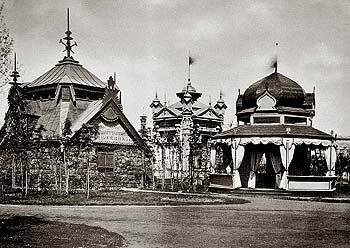The herb has the age-old reputation for supporting the immune system.
Cistus Incanus Tea Only the high concentration of polyphenols from the richly
abundant leafs in small pieces are used, no wood or blending.
1. A food supplement with no side effects
2. High concentration of polyphenols
3. The highest quality nutritional supplement
4. Support your immune system with this powerful antioxidant
5. Helps cleanse your body from toxin overload and enhance your body’s natural resistance to colds and flu
6. Richly abundant leaf, no wood or blending / pure plant content
7. Free from gene manipulated contents
8. Nominated as Europe’s PLANT OF THE YEAR OF THE YEAR 1999
9. Renowned by many Media Reports

What is Cistus Incanus?
The use of the Cistus Incanus has a long history and can be traced back to the 4th century BC. In the Middle East, northern Africa and the European Mediterranean region the Cistus Incanus was enjoyed as a wellness tea for breakfast and indeed right throughout the day as a drink for relaxing after a strenuous day. When guests arrived, it was common to offer a freshly boiled pot of the Cistus tea. The knowledge of the benefits of this tea were passed on late into the middle Ages.
Why is it called the Pink Rock Rose?
It is so because it is a small pink rockrose, a small aromatic bush. Their flowers resemble single, old-fashioned roses (although they are unrelated) and because they prefer to grow in rocky, well-drained soil. They are evergreen strongly woody shrubs, varying in height from two to over eight feet and from three to more than six feet across. Some sprawl on the ground, while others are open, erect and rangy. These are not plants for formal, highly structured gardens. Even with moderate pruning, Rock Roses have a wild, undomesticated look in the landscape. They bloom most heavily in the spring, with some species beginning as early as March. Each flower lasts only a few hours but many kinds bloom so profusely that the entire plant is covered with hundreds of new blossoms each day. Colors range from white and many shades of pink and lavender-pink in Cistus to white and yellow in Halimium. Flowers of some rockroses also have a showy red to maroon spot or blotch at the base of each petal, offering stunning contrasts to the numerous bright yellow stamens at the center.

What are Polyphenols?
Certain plant compounds containing groups of ‘phenols’ and which also contain certain antioxidant characteristics. They are very powerful antioxidants, present in several different botanicals. Polyphenols are now known to be the called the ‘Vitamins of the 21st Century’. Some of them are referred to ‘OPC’s’, ‘Proanthenols’, and Proanthocynanidis’. Super-antioxidants, also known as proanthocyanidins, pycnogenols, or OPCs, fit into this category. Research indicates that a class of polyphenols has antioxidant characteristics with potential health benefits. Like vitamins, they play a central part in our health.
Where else do you find Polyphenols?
Polyphenols can be found in fruit, vegetables, red wine, green tea but the highest concentration of Polyphenols is only found in the CISTUS INCANUS.
Antioxidants are thought to be vital for maintaining good health, but why?
Antioxidants deactivate the free radicals in our system by attaching themselves to these cells
before they can do any harm. A diet high in anti-oxidants may reduce the risk of many diseases, including heart disease and certain cancers.
What are antioxidants?
Antioxidants is a word frequently used in the media but does anyone really know what it is? Here is a simple, illustrated definition that while based on science is not in the usual scientific terminology that few of us understand. Antioxidants are a classification of several organic substances, period. Antioxidants are substances that protect cells from being damaged by oxidation, which is a chemical reaction.
Antioxidants can help the body protect itself against free radicals. They are found in certain foods. These include Vitamins A, C and E.
When your car's metal oxidizes (or rusts), it's reacting with oxygen in the air. Unfortunately, your body's molecules are vulnerable to oxidation too. This causes you to produce free radicals that contribute to signs of aging and numerous health issues. Well, there's a way to help reduce your "rusting" process.
What are free radicals?
Free radicals are unstable, destructive molecules that lack electrons. They form naturally from normal metabolic processes such as breathing, but their production can rise beyond optimal levels due to:
• Obesity
• Poor diet
• Overly strenuous exercise
• Stress
• Smoking
• And many other factors
What the Immune System Does?
The immune system is the body’s defence against infectious organisms and other invaders. Through a series of steps called the immune response, the immune system attacks organisms and substances that invade our systems and cause disease.
CISTUS INCANUS / POLYPHENOLS
The Cistus Incanus has the age-old reputation for supporting the immune system. Giving our immune system an enormous boost as a food supplement. They support the body-own defense and immune system.

Cistus incanus from northern Crete they is unique that produces the laudanum with traditional way and is the most strong.
Cistus Incanus Tea Only the high concentration of polyphenols from the richly
abundant leafs in small pieces are used, no wood or blending.
1. A food supplement with no side effects
2. High concentration of polyphenols
3. The highest quality nutritional supplement
4. Support your immune system with this powerful antioxidant
5. Helps cleanse your body from toxin overload and enhance your body’s natural resistance to colds and flu
6. Richly abundant leaf, no wood or blending / pure plant content
7. Free from gene manipulated contents
8. Nominated as Europe’s PLANT OF THE YEAR OF THE YEAR 1999
9. Renowned by many Media Reports
What is Cistus Incanus?
The use of the Cistus Incanus has a long history and can be traced back to the 4th century BC. In the Middle East, northern Africa and the European Mediterranean region the Cistus Incanus was enjoyed as a wellness tea for breakfast and indeed right throughout the day as a drink for relaxing after a strenuous day. When guests arrived, it was common to offer a freshly boiled pot of the Cistus tea. The knowledge of the benefits of this tea were passed on late into the middle Ages.
Why is it called the Pink Rock Rose?
It is so because it is a small pink rockrose, a small aromatic bush. Their flowers resemble single, old-fashioned roses (although they are unrelated) and because they prefer to grow in rocky, well-drained soil. They are evergreen strongly woody shrubs, varying in height from two to over eight feet and from three to more than six feet across. Some sprawl on the ground, while others are open, erect and rangy. These are not plants for formal, highly structured gardens. Even with moderate pruning, Rock Roses have a wild, undomesticated look in the landscape. They bloom most heavily in the spring, with some species beginning as early as March. Each flower lasts only a few hours but many kinds bloom so profusely that the entire plant is covered with hundreds of new blossoms each day. Colors range from white and many shades of pink and lavender-pink in Cistus to white and yellow in Halimium. Flowers of some rockroses also have a showy red to maroon spot or blotch at the base of each petal, offering stunning contrasts to the numerous bright yellow stamens at the center.

What are Polyphenols?
Certain plant compounds containing groups of ‘phenols’ and which also contain certain antioxidant characteristics. They are very powerful antioxidants, present in several different botanicals. Polyphenols are now known to be the called the ‘Vitamins of the 21st Century’. Some of them are referred to ‘OPC’s’, ‘Proanthenols’, and Proanthocynanidis’. Super-antioxidants, also known as proanthocyanidins, pycnogenols, or OPCs, fit into this category. Research indicates that a class of polyphenols has antioxidant characteristics with potential health benefits. Like vitamins, they play a central part in our health.
Where else do you find Polyphenols?
Polyphenols can be found in fruit, vegetables, red wine, green tea but the highest concentration of Polyphenols is only found in the CISTUS INCANUS.
Antioxidants are thought to be vital for maintaining good health, but why?
Antioxidants deactivate the free radicals in our system by attaching themselves to these cells
before they can do any harm. A diet high in anti-oxidants may reduce the risk of many diseases, including heart disease and certain cancers.
What are antioxidants?
Antioxidants is a word frequently used in the media but does anyone really know what it is? Here is a simple, illustrated definition that while based on science is not in the usual scientific terminology that few of us understand. Antioxidants are a classification of several organic substances, period. Antioxidants are substances that protect cells from being damaged by oxidation, which is a chemical reaction.
Antioxidants can help the body protect itself against free radicals. They are found in certain foods. These include Vitamins A, C and E.
When your car's metal oxidizes (or rusts), it's reacting with oxygen in the air. Unfortunately, your body's molecules are vulnerable to oxidation too. This causes you to produce free radicals that contribute to signs of aging and numerous health issues. Well, there's a way to help reduce your "rusting" process.
What are free radicals?
Free radicals are unstable, destructive molecules that lack electrons. They form naturally from normal metabolic processes such as breathing, but their production can rise beyond optimal levels due to:
• Obesity
• Poor diet
• Overly strenuous exercise
• Stress
• Smoking
• And many other factors
What the Immune System Does?
The immune system is the body’s defence against infectious organisms and other invaders. Through a series of steps called the immune response, the immune system attacks organisms and substances that invade our systems and cause disease.
CISTUS INCANUS / POLYPHENOLS
The Cistus Incanus has the age-old reputation for supporting the immune system. Giving our immune system an enormous boost as a food supplement. They support the body-own defense and immune system.
Cistus incanus from northern Crete they is unique that produces the laudanum with traditional way and is the most strong.

































.png)






































